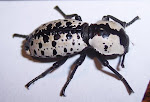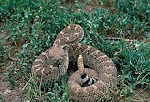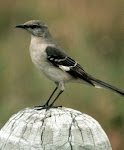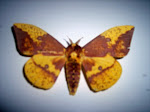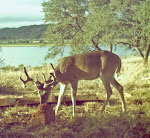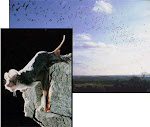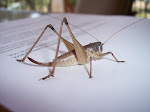Issue 8 - September 22, 2009 Imperial Moth
Good Morning to you neighbor! I’m sitting here with Mr. Folgers (the red one, not the fake green stuff), and we are patiently waiting for the sun to bust out in the east. I don’t think there will be much ‘busting’ this morning because the clouds that brought the rain last night are probably lingering around up there. Hope so, because it will cool things off and I, for one, prefer 74 degrees to 104.
It is officially autumn here in Paradise and the recent rains have made it just that more beautiful. Mystic Shores is pleasing to the eye at any time of the year but right now it has some special attraction. As the light grabs hold, I can see that there is a hint, just a hint mind you, of the seasonal change but it is masked by the green that follows any rain here in the Hill Country. Join me as I go out on the porch to take in the scene.
I can see six shades of green plants between my house and the lake. I see rose colored tuffs of grass and tiny little blue blossoms in the path. There are yellow flowers sprinkled everywhere, with wide swaths of them down by the water’s edge. The water itself takes on the color of the sky so it appears light grey right now, with darker streaks where the wind has stirred it up. It is a pretty picture and I just can’t help but grin when I see such beauty in nature. However, I’m a wildlife guy and I’m wondering where the meat is. Where is the beef? Certainly my fauna can hold its own with all this flashy flora!
I read somewhere that beauty is in the eye of the beholder. I think I get that concept. Since I can’t see the world from anyone’s perspective but my own, I’m going to write this issue of “Our Creatures” on what I believe is one of the most beautiful creatures we have here in Mystic Shores. Behold the Imperial Moth.
(Kingdom; Animalia, Phylum; Arthropoda, Class; Insecta, Order; Lepidoptera, Family; Saturniidae, Genus: Eacles, Species: E. imperialis)
The moth above is a male Imperial Moth and the picture is life size. (The wingspread of this fellow is over four inches!) I found him last month in our covered pavilion area near the entrance to Mystic Shores on the south side of 306. He was perched on the side of the mailboxes at 2pm in the afternoon.
This gorgeous creature is a member of the moth family that includes the giant silk moths. In this species, the females are larger than the males but their coloration is not quite as striking. The females have more of the ‘sulfur yellow’ and less of the ‘purple-brown’ coloration. I think that this color combination is fabulous, and I don’t know of anywhere else in the animal world where you find yellow and purple together like this. They don’t hide it either, because like all moths they open their wings when at rest. (Butterflies are different, in that they fold their wings back above their bodies when resting.) The color patterns vary quite a bit from moth to moth but, in general, the forewings have more of the purple color and there is more purple on the males. This particular Imperial Moth also exhibits other classic features of the moth family in its adult stage, such as its feathery antennae, the eye spots, and heavy body.
Humor me on this……. Squint at the picture above. Do you see the owl’s face? Do you think this might scare off a potential predator?
These insects are single brooded (one generation per year) and spend the winter in the ground as pupae. The adults emerge once a year and only have a lifespan of about a week. In fact, they don’t feed during this period and their mouthparts are reduced and non-functional. The adults emerge between April and October in our part of the country. They emerge before sunrise and mate after midnight the next day, if they are lucky enough to find a mate. One way nature has helped them to find one another in this rapid sequence is through the use of pheromones. These are chemicals emitted by the females that the males can detect up to a mile away. Think of that…… this little insect can detect a mate a whole mile away. (I can’t smell my wife’s perfume from a distance of three feet on a good day.) Anyway, once mated, the female lays her yellow eggs at dusk either singly or in small groups until she has laid approximately 200 eggs total.
The eggs are normally laid on the underside of the host plant leaves. Here in the Hill Country, the favored food is oak. After about two weeks, the eggs hatch and the caterpillars begin their solitary feeding.
Interestingly, there are two different color phases of the caterpillars. They can be either dark brown (and grow to look like a 4” spiny hot dog) or green (and look like a hairy, horned, green purple-people-eater). Regardless of their fierce and strange looks the caterpillars are harmless, and all go through five molts (called ‘instars’) before finishing this stage of metamorphosis. After they have completed their last molt they burrow into the ground and pupate over the winter. There is no cocoon.
They are fairly common throughout the eastern half of the United States and here in central Texas we are at the western edge of their distribution. You won’t find them in west Texas or the panhandle. For unknown reasons, they are becoming scarce in parts of New England.
The Imperial Moth is perhaps our only fauna that is featured as a character in a novel. Gene Stratton Porter’s “Girl Of The Limberlost” features Imperial Moths prominently in the plot. The girl, Elnora Comstock, chronicles the life cycle of the Imperial Moth and her growing discovery of nature is reflected in her childhood fascination with the beautiful creatures.
I can relate to that.
Clay
Tuesday, September 22, 2009
Wednesday, September 9, 2009
Issue 7 - Hognose Snake
Issue 7 - September 9, 2009 Western Hognose Snake
Well, it is 5:30 am and good morning to you! James Taylor is on the oldies station and life is good. (You guys may not remember James but I bet you remember Carly Simon). Anyway, time to wake up and smell the coffee! Another day in Paradise is waiting just on the other side of your eyelids and it’s raining here in Mystic Shores! Yep, RAINING cats and dogs! It has been a long, long time so help me recall the sequence……. water pours from the skies, the ground soaks it up, the plants go nuts and turn green, the bugs and other little critters come out of no-where, and our Western Hognose Snakes look for high ground.
Snakes, in general, get bad press and I’ll wager this can be traced back to another paradise called the Garden of Eden. Even without the religious overtones, when people think of snakes their first thoughts are of venom, rattles, Amazon monsters, and Samuel L. Jackson on a plane. At least in the case of the Western Hognose Snake, the reputation is not deserved. If our POA Conservation Committee ever declares a holiday called ‘Hug a Snake Day’, I’m going to pick this little guy.
(Kingdom; Animalia, Phylum; Chordata, Class; Reptilia, Order; Squamata, Family; Colubridae, Genus: Heterodon, Species: H. Nasicus)
Their most distinguishing feature is their upturned nose, or snout, and this, of course, is the source of their common name ‘Hognose’. You can see in the above photo how the snout comes to a point. It also has a heavy keel along its top. The flattened snout is an adaptation for digging, and these snakes are particularly adept at it, using a sweeping side-to-side motion. They can burrow out of sight amazingly fast in the sandy and gravely soils they prefer.
The first photo also shows the body scales clearly, which are keeled (i.e. have a ridge down the center running longitudinally) and these give the snake a rough texture.
This second picture is a great shot and was taken by Chuck Davey over on Obscure Way here in the Peninsula. (Chuck is the John Muir of Mystic Shores, but looks more like Grizzly Adams). Chuck’s photo shows some of the other physical characteristics of the Western Hognose. They are medium sized, but heavy-bodied serpents, and their chunky body ends in a skinny little tail. Although the snake shown above is very young (only about 7 inches long) it has the shape and coloration of an adult, which commonly reach 24 inches in length. Like many snakes, females are often larger than the males. The coloration on top is typical for the Western Hognose and consists of a tan background with darker brown splotches down the back, with two alternating rows of smaller dark spots down the sides.
This little fellow is riled up and you can see it in his posture. When agitated enough, these critters will rear up, spread their jaws and neck and ribs to increase their size (kind of like a Cobra) and even hiss. This hissing can be very vigorous and in some areas the local name for these snakes is ‘hissing adder’ or ‘blow snake’. They will even feign strikes if provoked enough, but it is all bluff because they strike with their mouth closed. They are not considered dangerous to people and never bite in self-defense. However, if a predator is persistent, and if the hognose’s display doesn’t succeed in scaring off their tormentor, they have one more ploy………. and they are famous for it.
The hognose will try one last charade to fool a would-be predator and that is to fake its own death. It will start by twisting and turning and acting like it is in pain, writhe around for a few seconds, then flip onto its back and play dead. It will open its mouth, stick out its tongue, go limp and nothing will convince it to move. Even if it is picked up, it will remain limp and lifeless. It will go so far as to expel musk or fecal matter and even bleed from its mouth to fake its death. One thing does give it away, however, and that is if turned upright, it will immediately flip back over and show its belly.
The picture below shows a hognose playing ‘possum’ and acting like it is dead. It looks pretty convincing to me but I can’t help but wonder how helpful this really is in avoiding predation. The predator had better not eat carrion.
There is one interesting study that indicates that the snake is watching the predator during this act. Although appearing to be dead, it will keep an eye on the animal that caused the death pose and will ‘recover’ sooner and slither away if the threat is looking in the other direction. It will stay in this pose if the threat is watching. Eventually, if left alone, the snake will right itself and crawl away to resume its activities.
The bottom side of the snake has different coloration than the top. It is shiny black with small yellow or whitish squares, often clustered together.
Our Western Hognose is diurnal and is most active in the morning and evening. They are voracious eaters and will consume most any small animal they can catch, including mice, frogs, toads, lizards, both reptile and bird eggs, and small birds themselves. They typically consume their prey live without any constriction or body pinning.
One species of hognose (not our western variety) specializes in eating toads. This diet and some unique features of the snakes’ teeth have resulted in a myth that these snakes will “pop toads”, in other words, puncture and deflate toads that have inflated themselves to make swallowing more difficult.
Hognose snakes are rear-fanged and technically not venomous, but there is evidence that their saliva is toxic to small prey like toads. (Again, they never bite in defense, and people have nothing to worry about. Their teeth are so far back in their jaw that you’d have to stick your finger down their throat to get bitten.) The fangs have been described as ‘enlarged teeth’ that are used to restrain prey. Despite the common belief that these fangs are used to puncture the lungs of inflated toads, whole toads with inflated lungs are commonly regurgitated by recently captured hognoses.
You can easily tell the sex of the Western Hognose Snake by the length of its tail compared to its body size. The males have proportionally longer tails.
Our Western Hognose Snakes hibernate from September through March and do this underground, often in a vacant mammal burrow. It appears that this dormant period (at relatively low temperatures) is necessary for proper sperm development in the males.
The mating ritual is a little tenuous for the male because if the female is a lot larger than the male, she is likely to eat him. However, if she is more interested in romance than food, she will indicate this by thrashing her tail back and forth. They breed in the spring and six to eight weeks later the females lay, on average, about 16 eggs in a clutch. They hatch in August or September and come out of the egg 5-8 inches long. The young shed their skin immediately and are ready to eat and fend for themselves. They reach sexual maturity in two years.
The Western Hognose Snake ranges from Alberta, Canada south to Arizona and Texas and into northern Mexico. There are isolated groups in a few mid-western states as well. They were first described as a genus all the way back in 1852.
Normally, these small snakes are mellow and have docile temperaments, characteristics that make them a favorite of the pet snake crowd. Their ‘cute’ little upturned nose and their defensive charades also endear them to people and make them desirable pets. They can be frequently found at exotic pet stores and are relatively easy to raise.
One really cool thing about the hognosed snake is that it has been immortalized by the one and only James Taylor in the lyrics of his song “Copperline”.
“Half a mile down to Morgan Creek, leaning heavy on the end of the week.
Hercules and a hognosed snake, down on Copperline, we were down on Copperline.”
Clay
Well, it is 5:30 am and good morning to you! James Taylor is on the oldies station and life is good. (You guys may not remember James but I bet you remember Carly Simon). Anyway, time to wake up and smell the coffee! Another day in Paradise is waiting just on the other side of your eyelids and it’s raining here in Mystic Shores! Yep, RAINING cats and dogs! It has been a long, long time so help me recall the sequence……. water pours from the skies, the ground soaks it up, the plants go nuts and turn green, the bugs and other little critters come out of no-where, and our Western Hognose Snakes look for high ground.
Snakes, in general, get bad press and I’ll wager this can be traced back to another paradise called the Garden of Eden. Even without the religious overtones, when people think of snakes their first thoughts are of venom, rattles, Amazon monsters, and Samuel L. Jackson on a plane. At least in the case of the Western Hognose Snake, the reputation is not deserved. If our POA Conservation Committee ever declares a holiday called ‘Hug a Snake Day’, I’m going to pick this little guy.
(Kingdom; Animalia, Phylum; Chordata, Class; Reptilia, Order; Squamata, Family; Colubridae, Genus: Heterodon, Species: H. Nasicus)
Their most distinguishing feature is their upturned nose, or snout, and this, of course, is the source of their common name ‘Hognose’. You can see in the above photo how the snout comes to a point. It also has a heavy keel along its top. The flattened snout is an adaptation for digging, and these snakes are particularly adept at it, using a sweeping side-to-side motion. They can burrow out of sight amazingly fast in the sandy and gravely soils they prefer.
The first photo also shows the body scales clearly, which are keeled (i.e. have a ridge down the center running longitudinally) and these give the snake a rough texture.
This second picture is a great shot and was taken by Chuck Davey over on Obscure Way here in the Peninsula. (Chuck is the John Muir of Mystic Shores, but looks more like Grizzly Adams). Chuck’s photo shows some of the other physical characteristics of the Western Hognose. They are medium sized, but heavy-bodied serpents, and their chunky body ends in a skinny little tail. Although the snake shown above is very young (only about 7 inches long) it has the shape and coloration of an adult, which commonly reach 24 inches in length. Like many snakes, females are often larger than the males. The coloration on top is typical for the Western Hognose and consists of a tan background with darker brown splotches down the back, with two alternating rows of smaller dark spots down the sides.
This little fellow is riled up and you can see it in his posture. When agitated enough, these critters will rear up, spread their jaws and neck and ribs to increase their size (kind of like a Cobra) and even hiss. This hissing can be very vigorous and in some areas the local name for these snakes is ‘hissing adder’ or ‘blow snake’. They will even feign strikes if provoked enough, but it is all bluff because they strike with their mouth closed. They are not considered dangerous to people and never bite in self-defense. However, if a predator is persistent, and if the hognose’s display doesn’t succeed in scaring off their tormentor, they have one more ploy………. and they are famous for it.
The hognose will try one last charade to fool a would-be predator and that is to fake its own death. It will start by twisting and turning and acting like it is in pain, writhe around for a few seconds, then flip onto its back and play dead. It will open its mouth, stick out its tongue, go limp and nothing will convince it to move. Even if it is picked up, it will remain limp and lifeless. It will go so far as to expel musk or fecal matter and even bleed from its mouth to fake its death. One thing does give it away, however, and that is if turned upright, it will immediately flip back over and show its belly.
The picture below shows a hognose playing ‘possum’ and acting like it is dead. It looks pretty convincing to me but I can’t help but wonder how helpful this really is in avoiding predation. The predator had better not eat carrion.
There is one interesting study that indicates that the snake is watching the predator during this act. Although appearing to be dead, it will keep an eye on the animal that caused the death pose and will ‘recover’ sooner and slither away if the threat is looking in the other direction. It will stay in this pose if the threat is watching. Eventually, if left alone, the snake will right itself and crawl away to resume its activities.
The bottom side of the snake has different coloration than the top. It is shiny black with small yellow or whitish squares, often clustered together.
Our Western Hognose is diurnal and is most active in the morning and evening. They are voracious eaters and will consume most any small animal they can catch, including mice, frogs, toads, lizards, both reptile and bird eggs, and small birds themselves. They typically consume their prey live without any constriction or body pinning.
One species of hognose (not our western variety) specializes in eating toads. This diet and some unique features of the snakes’ teeth have resulted in a myth that these snakes will “pop toads”, in other words, puncture and deflate toads that have inflated themselves to make swallowing more difficult.
Hognose snakes are rear-fanged and technically not venomous, but there is evidence that their saliva is toxic to small prey like toads. (Again, they never bite in defense, and people have nothing to worry about. Their teeth are so far back in their jaw that you’d have to stick your finger down their throat to get bitten.) The fangs have been described as ‘enlarged teeth’ that are used to restrain prey. Despite the common belief that these fangs are used to puncture the lungs of inflated toads, whole toads with inflated lungs are commonly regurgitated by recently captured hognoses.
You can easily tell the sex of the Western Hognose Snake by the length of its tail compared to its body size. The males have proportionally longer tails.
Our Western Hognose Snakes hibernate from September through March and do this underground, often in a vacant mammal burrow. It appears that this dormant period (at relatively low temperatures) is necessary for proper sperm development in the males.
The mating ritual is a little tenuous for the male because if the female is a lot larger than the male, she is likely to eat him. However, if she is more interested in romance than food, she will indicate this by thrashing her tail back and forth. They breed in the spring and six to eight weeks later the females lay, on average, about 16 eggs in a clutch. They hatch in August or September and come out of the egg 5-8 inches long. The young shed their skin immediately and are ready to eat and fend for themselves. They reach sexual maturity in two years.
The Western Hognose Snake ranges from Alberta, Canada south to Arizona and Texas and into northern Mexico. There are isolated groups in a few mid-western states as well. They were first described as a genus all the way back in 1852.
Normally, these small snakes are mellow and have docile temperaments, characteristics that make them a favorite of the pet snake crowd. Their ‘cute’ little upturned nose and their defensive charades also endear them to people and make them desirable pets. They can be frequently found at exotic pet stores and are relatively easy to raise.
One really cool thing about the hognosed snake is that it has been immortalized by the one and only James Taylor in the lyrics of his song “Copperline”.
“Half a mile down to Morgan Creek, leaning heavy on the end of the week.
Hercules and a hognosed snake, down on Copperline, we were down on Copperline.”
Clay
Subscribe to:
Posts (Atom)
